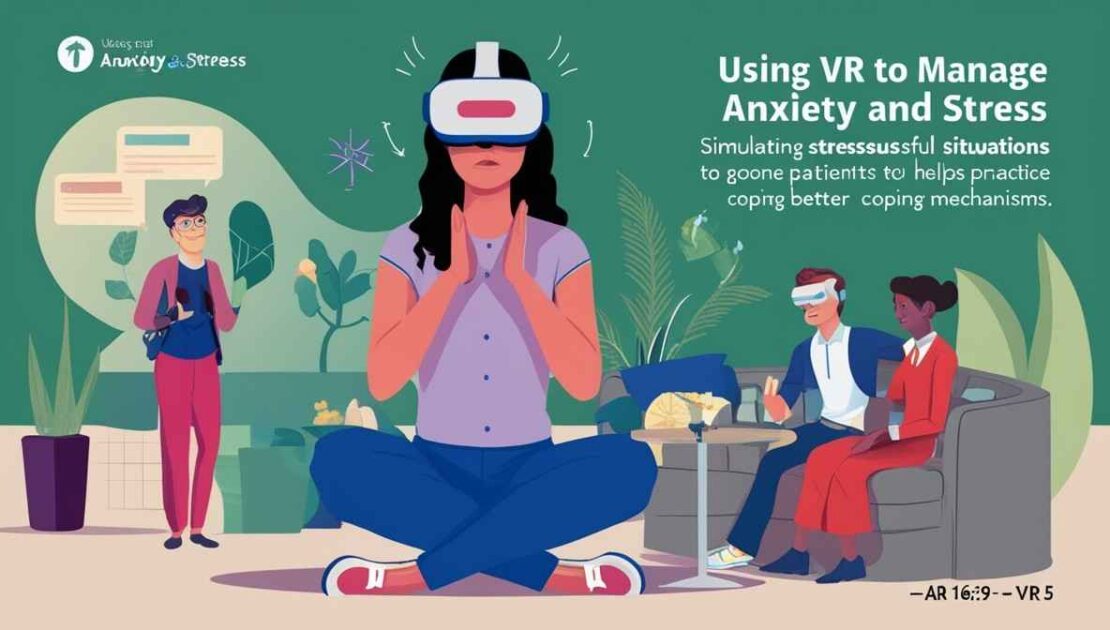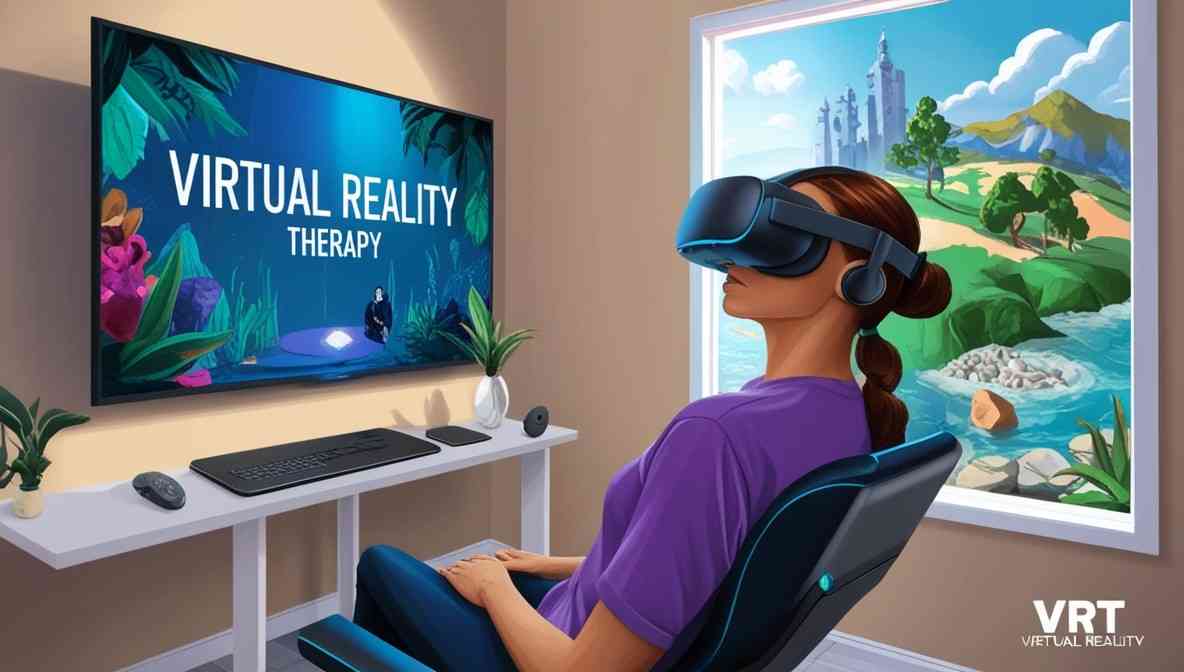Virtual reality therapy (VRT) is one of the most exciting innovations in mental health treatment today. Imagine being able to confront your deepest fears, manage anxiety, or even heal from trauma—all in a controlled, immersive virtual environment.
Virtual reality (VR) technology, once thought to be solely for gaming and entertainment, is now helping individuals face their mental health challenges head-on. But what exactly makes VR therapy so effective, and why is it becoming increasingly popular? Virtual reality therapy definition
Table of Contents
ToggleThe Evolution of Virtual Reality in Healthcare
Though virtual reality has been around for decades, its use in healthcare is relatively new. Initially, VR technology was explored in the 1990s, primarily for surgical simulations and physical therapy. However, its application in mental health treatment is a much more recent and rapidly growing field. Today, VR is revolutionizing how therapy is delivered, offering immersive experiences that are helping patients cope with anxiety, PTSD, and various other conditions.
Why VRT is Gaining Popularity in Mental Health Care
The growing popularity of VRT is due to its ability to create controlled environments where individuals can confront their mental health challenges without real-world consequences. Whether someone is struggling with social anxiety, phobias, or post-traumatic stress disorder (PTSD), VR therapy offers a safe space to confront and manage these issues with the guidance of a therapist.
A Brief Overview of Virtual Reality (VR) Technology
Virtual reality immerses users in a simulated environment using a VR headset. This advanced technology can transport you to different locations or simulate scenarios, allowing your brain to engage with the experience as if it were real. For therapy purposes, this level of immersion can be incredibly powerful.
What Sets Virtual Reality Therapy Apart?
Unlike traditional forms of therapy, VR therapy doesn’t rely solely on imagination. Instead, it gives users a more tactile experience by placing them in environments that closely mimic real-world challenges. This heightened level of interaction makes VRT highly effective for exposure therapy and other cognitive-behavioral treatments.
The Science Behind Virtual Reality Therapy
How Virtual Reality Creates Immersive Environments
VR works by fully immersing individuals in a three-dimensional, computer-generated world. The technology uses visual, auditory, and sometimes even tactile cues to simulate real-life situations. In therapy, these environments are designed to provoke specific emotional responses, such as fear or stress, which the therapist can then help the patient navigate.
VR in Confronting Fears and Phobias
Phobias can be debilitating, but VR therapy provides an innovative way to tackle them. Whether someone is afraid of heights, flying, or spiders, VR can simulate these experiences in a safe environment. Over time, repeated exposure through VR can desensitize individuals to their fears, making them easier to manage in the real world.
Role of VR in Exposure Therapy
Exposure therapy is a well-known technique in psychology where individuals gradually confront their fears. VR takes this concept to a new level by allowing therapists to create environments that closely replicate these fears. Whether it’s public speaking or interacting in social settings, VR provides a fully controlled experience that helps people overcome their anxieties.
Combining Cognitive Behavioral Therapy (CBT) with VR
CBT is a widely-used therapy technique aimed at changing negative thought patterns. When combined with VR, CBT becomes even more effective, as individuals can practice confronting their anxieties in real-time with immediate feedback from the therapist. This dynamic approach accelerates the therapy process, leading to quicker results.
Using VR to Manage Anxiety and Stress
Simulating Stressful Situations for Better Coping Mechanisms
Anxiety can be overwhelming, but VR offers a way to simulate stressful scenarios, allowing patients to practice calming techniques. By gradually exposing individuals to anxiety-inducing situations, such as crowded places or challenging conversations, VR helps them build resilience and coping skills.

How VR Calms Anxiety in Real-time
The beauty of VR is that it can provide immediate relaxation techniques as well. Some VR programs are designed to instantly reduce stress through calming visuals, sounds, and guided meditations. This makes it a valuable tool for both managing anxiety in the moment and developing long-term coping strategies.
Virtual Reality for Treating PTSD
Exposure Therapy in VR for PTSD Treatment
Post-traumatic stress disorder (PTSD) affects millions of people, particularly those who have experienced severe trauma such as combat or abuse. Traditional therapy methods can be effective, but many individuals struggle with reliving traumatic experiences. VR exposure therapy allows for gradual, controlled exposure to these memories in a safe environment, helping individuals process their trauma without becoming overwhelmed.
How VR Helps Soldiers and Trauma Survivors
For soldiers and other trauma survivors, VR offers an invaluable tool for recovery. In a VR setting, individuals can revisit the traumatic event in a way that feels real but is fully controlled. This gives them the chance to reprocess their emotions and gain a sense of control over their experiences, which is essential for healing.
VR as a Tool for Memory Reconstruction
In cases of PTSD, distorted memories can often make recovery more difficult. VR helps individuals reconstruct their memories by allowing them to relive events in a way that brings clarity and helps them deal with emotional responses in a more balanced way.
The Benefits of Virtual Reality Therapy
Controlled, Safe, and Customizable Environments
One of the major advantages of VRT is that it offers a controlled environment where patients can confront their fears and anxieties. Unlike real-world situations, the therapist can pause, slow down, or alter the scenario to suit the patient’s needs.
Faster Recovery and Better Patient Outcomes
Many patients who undergo VR therapy report faster recovery times compared to traditional methods. By confronting their fears in a realistic yet safe environment, they gain confidence that translates into better outcomes in their day-to-day lives.
Personalized Therapy Sessions
Every individual’s mental health needs are unique, and VR therapy allows therapists to personalize sessions based on the patient’s specific fears, anxieties, or trauma. This personalized approach ensures that each session is highly relevant and effective.
Real-Time Feedback for Both Patients and Therapists
Because VR offers real-time feedback, both patients and therapists can monitor progress more closely. This allows for adjustments to be made during sessions to optimize results.
Challenges and Limitations of Virtual Reality Therapy
Accessibility and Cost Considerations
While VR therapy is incredibly promising, it does come with its challenges. For one, not everyone has access to the technology, and the cost of high-quality VR equipment can be prohibitive for some patients and clinics.
Possible Side Effects and Risks
Although rare, some individuals may experience dizziness or nausea while using VR headsets. Additionally, prolonged use without breaks can cause eye strain. These risks should be considered when opting for VR therapy.
Conclusion
Virtual Reality Therapy is being used to help individuals confront fears, manage anxiety, and treat PTSD in controlled, immersive environments. Challenges and Limitations of Virtual Reality Therapy and Benefits of Virtual Reality Therapy
